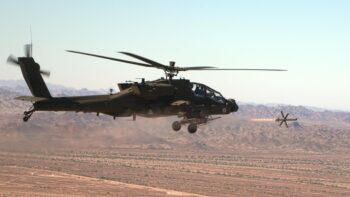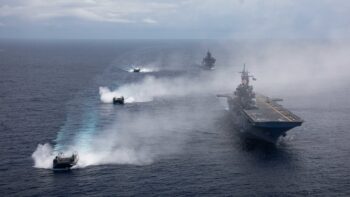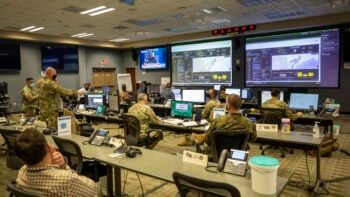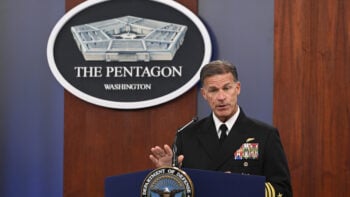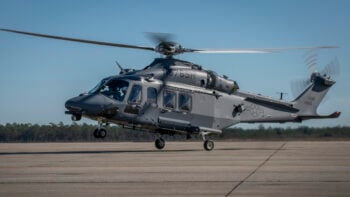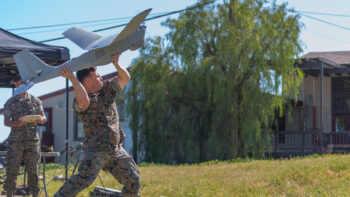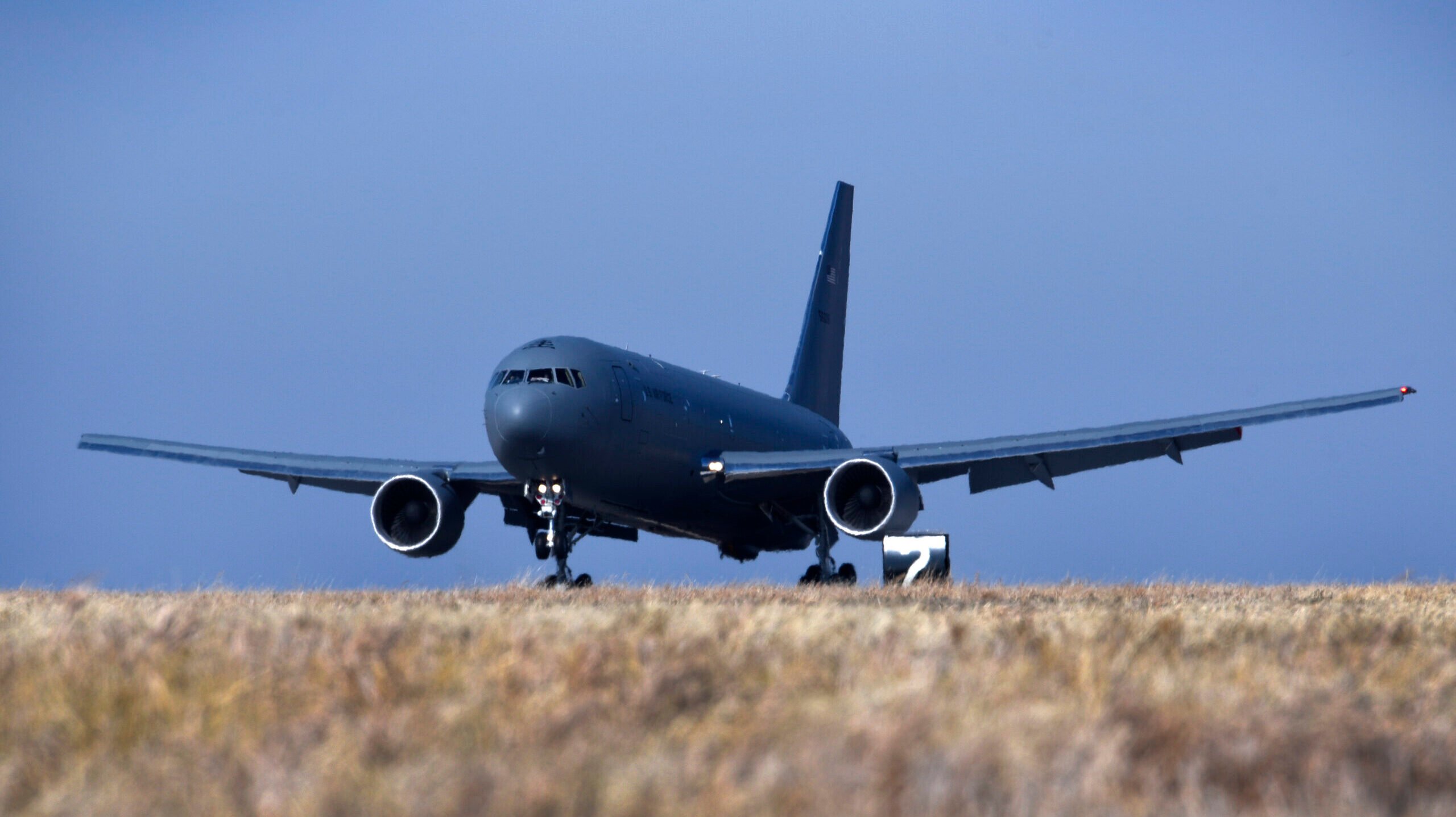
McConnell’s first KC-46A Pegasus lands on Jan. 25, 2019, at McConnell Air Force Base, Kansas. (U.S. Air Force photo by Airman 1st Class Michaela R. Slanchik)
DAYTON, Ohio — More than a year and a half after a government watchdog flagged several serious problems with the KC-46A Pegasus refueling tanker, a total of six category 1 deficiencies remain on the aircraft, according to an Air Force official who also provided new details on the timeline for several fixes.
“We’re down to six Cat 1 DR’s” said chief of the Air Force’s program office Col. Lee Ottati during the Life Cycle Industry Days conference here, using a shorthand for category 1 deficiency reports.
Category 1 deficiencies indicate a serious problem with an aircraft, which Air Force spokesman Brian Brackens said “are those which if uncorrected may cause death, severe injury, or severe occupational illness; or may cause loss or major damage to a weapon system; or critically restricts the combat readiness capabilities of the using organization; or which would result in a production line stoppage.”
Seven category 1 deficiencies were previously listed in a January 2022 report by the Government Accountability Office [PDF], though many were identified prior to that report. One deficiency, an issue with the jet’s flight management system, was downgraded to a category 2 problem in April, Ottati said. The issue will remain open to ensure software fixes are functioning properly, he added, after which the deficiency will be closed out.
Boeing has so far incurred over $7 billion in losses to fix known issues with the aircraft.
“We are partnering with the Air Force and have a path to closure on each of these issues. The specific timeline is subject to our joint efforts and the Air Force determines when Cat 1 issues close,” the company said in a statement to Breaking Defense.
The six remaining category 1 deficiencies on the Pegasus each relate to different aspects of the aircraft, with two directly tied to the tanker’s troubled Remote Vision System. The problems with RVS are expected to be resolved with its 2.0 replacement, which Ottati said is still on track for resolution in late 2025 after being delayed by over a year.
According to Ottati, once the new RVS is developed, each Pegasus will take about two months to retrofit, with the system also being cut into production for new builds. “We still have challenges and schedule risk with RVS 2.0,” he acknowledged.
A fix for the refueler’s so-called “stiff boom,” which prevents refueling with the A-10 Warthog, is expected to be developed around “early [fiscal year 2025],” Ottati said, adding that officials are “still struggling a little bit” with its schedule. Long lead times for the parts required to retrofit the fleet have provided some margin, he said, though he emphasized the program is “working closely with Boeing [and subcontractor] Moog to make sure that we don’t eat up that margin.”
The remaining category 1 issues, referred to as product quality deficiencies, relate to leaks in the plane’s fuel system and cracks in drain masts and drain tubes. The fix for the fuel leaks, consisting of a redesigned manifold seal, has been implemented in production, and retrofits are underway, but Ottati said officials are assessing its performance for approximately six more months before moving to downgrade the deficiency. Ottati said the deficiency will then be closed out “at some point.”
Similarly, Ottati said a fix for cracking on the aircraft’s auxiliary power unit drain masts — a small metal piece on the back of the aircraft that drains fluids in flight — is in hand and retrofits have begun, though the program is gathering data on its efficacy for about the next “maybe six months or longer,” where officials will then decide whether to downgrade its deficiency rating. The drain mast issue is a leading example of the need to take enough time to assess a fix, Ottati said, since the Air Force previously downgraded the deficiency only to raise it to a category one again after new cracking cropped up.
Finally, a fix for a flaw in the aircraft’s receptacle drain line, which ensures no excess fuel or water remains in its refueling receptacle, is still under development. The problem could “create a potential that there could be fuel in the flight deck,” Ottati explained. A fix is set to enter flight testing within the next two months, Ottati said, adding that its development is still ongoing “primarily” due to certification demands from the Federal Aviation Administration.
As those flight tests proceed, the program “can discuss the kind of finalization of that design and then ultimately the retrofit for that new drain line.”
Air Force officials have framed the Pegasus as the likely answer for the service’s efforts to continue recapitalization of its aging KC-135 refueling fleet — the other contender being Lockheed Martin’s LMXT, a version of the Airbus A330 Multi Role Tanker Transport — though a service official on Monday made clear that no final decision has been made. A request for information for the next round of tanker buys is expected around the end of next month, the official said, with a finalized acquisition strategy planned for the third quarter of FY24.
Army planning consolidation roadmap for loitering munitions and small drones
Army acquisition head Doug Bush said he and Army Futures Command head Gen. James Rainey expect to have a plan rolled out sometime this summer.

















